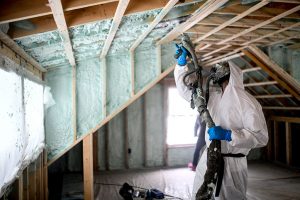In the realm of firefighting, the use of advanced technologies and specialized equipment has become crucial in combating fires effectively and minimizing damage. One such indispensable tool is fire foam. This article aims to explore the multifaceted applications and significance of fire foam in modern firefighting practices. From its composition and working mechanism to its diverse uses, we will delve into the world of fire foam and its vital role in fire suppression.
Understanding Fire Foam:
Fire foam, also known as firefighting foam or simply foam, is a specially formulated substance designed to extinguish and control fires. It is composed of three main components: water, foam concentrate, and air. The foam concentrate contains surfactants and other additives that enhance its firefighting properties. When mixed with water and aerated, the foam concentrate produces a foam blanket that suppresses fires by smothering the flames, cooling the fuel, and preventing re-ignition.
Applications of Fire Foam:
- Class A Fires:
Fire foam finds extensive use in combating Class A fires, which involve ordinary combustible materials such as wood, paper, and textiles. The foam's ability to penetrate porous materials and cling to surfaces makes it highly effective in extinguishing these fires. Additionally, the foam's cooling properties help reduce the temperature of the fuel, preventing re-ignition. - Class B Fires:
Class B fires involve flammable liquids and gases, including gasoline, oil, and propane. Fire foam is particularly useful in these scenarios due to its ability to create a vapor-sealing blanket, preventing the release of flammable vapors and suppressing the fire. This technique, known as "blanketing," helps to control and extinguish the flames, minimizing the risk of explosions. - Hazmat Incidents:
Fire foam also plays a crucial role in hazardous materials (Hazmat) incidents. These incidents involve the release of dangerous substances, such as chemicals or radioactive materials. Fire foam can be used to create a foam barrier, preventing the spread of hazardous materials and reducing the risk of contamination or further damage. - Wildfires:
In recent years, the frequency and intensity of wildfires have increased significantly. Fire foam has emerged as a valuable tool in combating these destructive forces. By creating firebreaks and applying foam to the leading edges of wildfires, firefighters can slow down or halt the fire's progression, allowing for more effective containment and control.
Conclusion:
Fire foam is a versatile and indispensable tool in modern firefighting. Its ability to suppress fires, prevent re-ignition, and control hazardous materials makes it an essential component of any firefighting operation. From combating Class A and B fires to mitigating Hazmat incidents and tackling wildfires, fire foam's effectiveness and versatility have revolutionized firefighting practices. As technology continues to advance, it is crucial to recognize the importance of fire foam in ensuring the safety of both firefighters and the communities they serve.











+ There are no comments
Add yours